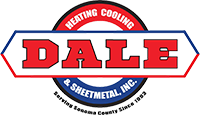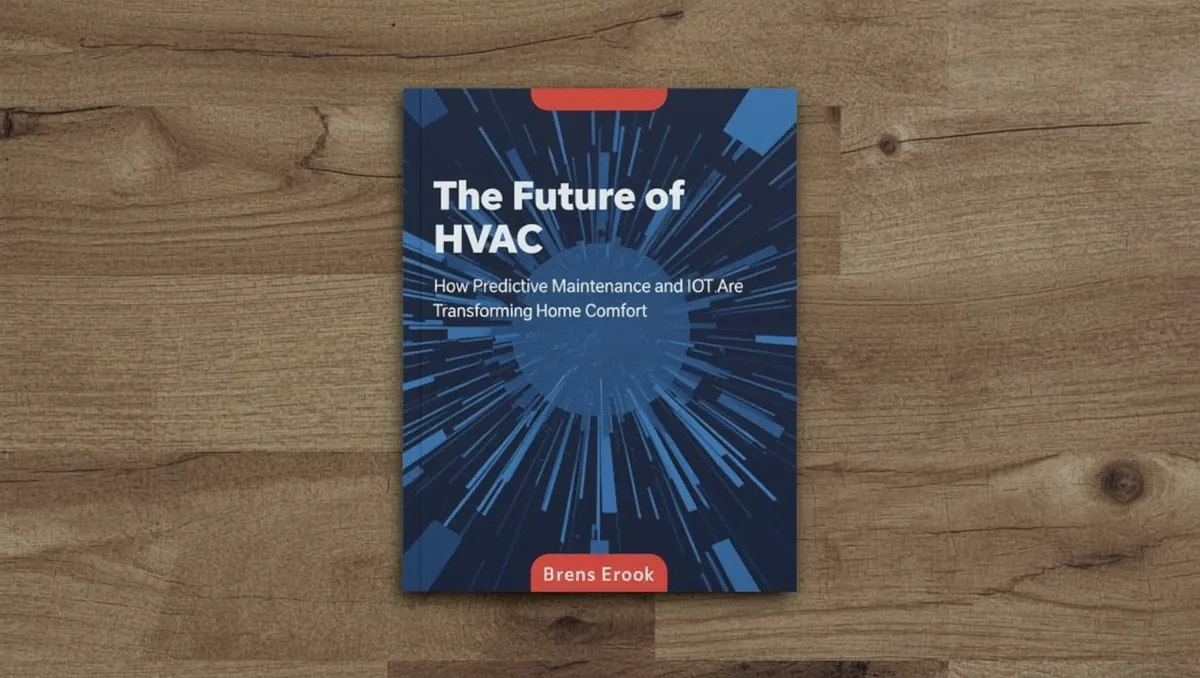In today’s connected world, your home’s HVAC system is getting smarter by the day. Here in Sonoma County, where we experience everything from chilly winter mornings to scorching summer afternoons, having an HVAC system that can anticipate problems before they occur isn’t just convenient—it’s revolutionary for your family’s comfort and your wallet.
Predictive maintenance powered by Internet of Things (IoT) technology is changing how we approach heating and cooling system care, moving from reactive repairs to proactive maintenance.
| Topic | Key Points |
|---|---|
| IoT Monitoring Benefits | Real-time performance tracking, early problem detection, automated alerts |
| AI-Driven Diagnostics | Pattern recognition, predictive failure analysis, customized maintenance schedules |
| Energy Efficiency | Optimized operation, reduced energy consumption, lower utility bills |
| System Longevity | Extended equipment life, fewer major repairs, better return on investment |
How IoT and AI Are Revolutionizing HVAC Maintenance
Traditional HVAC maintenance typically follows a calendar-based schedule or happens reactively when something breaks down. This approach often means discovering problems after they’ve already caused damage or when your system fails during extreme weather. IoT technology transforms this model by introducing a network of smart sensors throughout your cooling and heating system that continuously monitor critical components.
These intelligent sensors track everything from airflow and refrigerant pressure to coil temperature and electrical current draw. The data collected feeds into AI systems that establish performance baselines unique to your home and equipment. When the system detects subtle changes that human technicians might miss—like a 5% reduction in airflow or a slight increase in motor temperature—it can alert you or your service provider before these minor issues develop into major problems.
For Sonoma County homeowners, this technology is especially valuable during our peak seasons. Imagine knowing your air conditioner needs attention before it fails during a summer heat wave, or receiving an alert about your furnace before the first cold snap of winter leaves your family shivering. This proactive approach to heating and cooling maintenance represents a fundamental shift in how we care for our home’s most essential comfort systems.
The Practical Benefits for Your Home and Family
When considering an upgrade to IoT-enabled HVAC equipment or adding smart monitoring to your existing system, the practical benefits extend far beyond simple convenience. These systems deliver tangible improvements to your home comfort, system reliability, and long-term operating costs.
The most immediate advantage is the early warning system that prevents catastrophic failures. Instead of waking up to a freezing house or coming home to sweltering indoor temperatures, predictive maintenance tools give you advance notice when components are beginning to show signs of wear. According to the American Society of Heating, Refrigerating and Air-Conditioning Engineers (ASHRAE), predictive maintenance can reduce unexpected breakdowns by up to 75% compared to reactive maintenance approaches.
Beyond reliability, IoT monitoring delivers significant efficiency improvements that directly impact your utility bills and environmental footprint:
- Smart sensors detect when airflow is restricted, prompting filter changes before your system has to work harder and consume more energy.
- Refrigerant level monitoring ensures your system operates at optimal efficiency rather than struggling with too little or too much refrigerant.
- Performance tracking identifies gradual efficiency declines that would otherwise go unnoticed until they result in significantly higher energy bills.
- Real-time operation data allows for automated adjustments to match your home’s changing conditions throughout the day.
- Usage pattern analysis helps identify opportunities for schedule optimization that maximize comfort while minimizing energy consumption.
The Technical Side Made Simple
While the technology behind predictive maintenance sounds complex, implementing it in your home can be surprisingly straightforward. Modern HVAC systems increasingly come with built-in monitoring capabilities, while older systems can often be upgraded with aftermarket sensors and controllers. The heart of any IoT-based HVAC system is its sensor network, which typically includes devices monitoring temperature, pressure, electrical consumption, airflow, and sometimes even air quality throughout your system.
These components work together to create a comprehensive health monitoring system for your HVAC equipment:
- Smart thermostats serve as the user interface and central hub, collecting data from various sensors throughout your system.
- Airflow sensors detect changes in system performance that might indicate clogged filters or duct obstructions.
- Vibration sensors attached to motors and compressors can detect minute changes that signal bearing wear or alignment issues.
- Power monitoring devices track electrical consumption patterns that might indicate component stress or inefficiency.
- Temperature sensors throughout the system ensure all components are operating within optimal ranges.
The collected data transmits to cloud-based analytics platforms where machine learning algorithms compare your system’s performance against both its own historical baseline and aggregate data from similar systems. This analysis can identify potential issues long before traditional diagnostic methods would catch them. For example, a gradual increase in compressor run time to achieve the same cooling effect might indicate a developing refrigerant leak weeks before it would become obvious through conventional means.
Commercial Applications Leading the Way
While residential IoT applications continue to grow, commercial HVAC settings have been early adopters of predictive maintenance technology. Large office buildings, hospitals, and manufacturing facilities have embraced these systems because of the substantial cost savings they provide. In commercial settings where HVAC represents 40-60% of energy consumption, even small efficiency improvements translate to significant financial benefits.
The good news for homeowners is that technologies pioneered in commercial applications are becoming increasingly accessible for residential use. The sophisticated monitoring systems once limited to commercial buildings with dedicated facilities managers are now available as consumer products that integrate with your smartphone and home automation systems. This technology transfer means Sonoma County homeowners can now benefit from enterprise-level HVAC intelligence scaled appropriately for residential applications.
According to the U.S. Department of Energy, proper maintenance facilitated by monitoring systems can reduce HVAC energy consumption by 15-20% compared to systems allowed to degrade over time without monitoring or regular maintenance.
The investment in IoT monitoring often pays for itself through extended equipment life and energy savings. When components are replaced based on their actual condition rather than arbitrary schedules, you avoid both premature replacement costs and the expenses associated with catastrophic failures. For many homeowners, especially those with higher-end HVAC systems, the return on investment becomes apparent within just a few years of implementation.
IoT Monitoring Benefits
Real-time tracking & alerts prevent costly repairs.
AI-Driven Diagnostics
Pattern recognition for predictive maintenance.
Energy Efficiency
Lowers bills by reducing energy consumption.
Getting Started with Smart HVAC Monitoring
For Sonoma County homeowners interested in exploring predictive maintenance options, several approaches can help you begin implementing this technology without overwhelming complexity. The simplest entry point is often a smart thermostat with diagnostic capabilities that can monitor basic system performance metrics like run times, temperature differentials, and cycle patterns.
From there, additional sensors can be added to create a more comprehensive monitoring system. Many HVAC service providers now offer monitoring packages that combine professional installation of sensors with ongoing analytics and alert services. These professional solutions often provide deeper insights than DIY approaches and can be particularly valuable for homes with complex multi-zone systems or specialized equipment.
When selecting monitoring solutions, look for systems that offer both automated alerts and historical performance tracking. The immediate notifications help you address urgent issues, while the long-term performance data provides valuable insights for future equipment decisions and efficiency improvements. The most effective systems balance technological sophistication with user-friendly interfaces that make the information accessible without requiring you to become an HVAC expert yourself.
The Future Is Predictive
As AI and IoT technologies continue to advance, predictive maintenance will become the new standard for home comfort systems. The days of unexpected HVAC failures and inefficient operation are gradually being replaced by intelligent systems that optimize performance, anticipate needs, and communicate clearly when professional attention is required.
For your family, this means greater peace of mind knowing your system is continuously monitored, improved comfort through optimized performance, and significant long-term savings through enhanced efficiency and reduced repair costs. As your local HVAC experts here in Sonoma County, we’re committed to helping homeowners navigate these technological advances and implement solutions that make sense for their specific needs and comfort priorities.
If you’re interested in learning more about how predictive maintenance and IoT monitoring could benefit your home’s comfort systems, we’re always here to help. Contact our team for a consultation on smart HVAC solutions tailored to your family’s needs. As your neighbors in Sonoma County, we’re proud to bring these innovative technologies to local homes while maintaining the personalized service and local expertise that comes with being a family-owned business serving our community.

